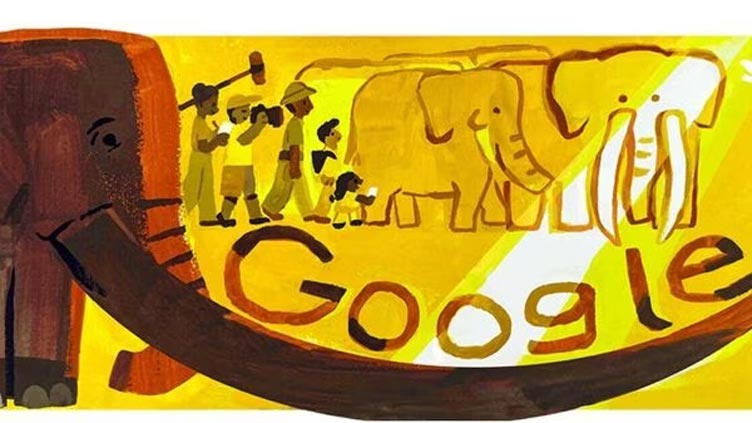What is elephant 'Ahmed's' claim to fame? Google shares insights through doodle

Technology
Ahmed became the focus of attention after being spotted in the 1960s in Kenya
LAHORE (Web Desk) - Google paid tribute to the world’s most unique elephant named ‘Ahmed’ by making a doodle.
Ahmed was an elephant who roamed the forests of Kenya and got the world’s attention through his unique features.
He was born in 1919 and became famous for his impressive tusks, which were the longest and heaviest ever recorded in Africa. Each of his tusks weighed more than 150 pounds.
Ahmed became the focus of attention after being spotted in the 1960s by hikers in the Northern Kenya.
Ahmed became a symbol of Kenya's natural beauty and was given special protection by the country's first president, Jomo Kenyatta.
He was also a popular tourist attraction as many people came from all over the world to see him. He was featured in many magazines and documentaries worldwide.
In 1970, Ahmed featured in many television projects, including an ABC series and a documentary.
Ahmed was also a reminder of the importance of conservation. His tusks were a valuable commodity, and therefore the poachers were always on the lookout for them.
Kenyan President placed him under his protection by Presidential Decree. Two security guards were appointed to keep a watch on the elephant throughout the day to save his life from poachers.
On Wednesday, Google Doodle paid tribute to Ahmed, honouring his remarkable life and the indelible mark he left on Kenya and the world.
His story serves as a beacon of hope, reminding us of the power of nature and our duty to cherish and protect the natural world.
Ahmed died of natural causes at the age of 55. Kenya celebrated the elephant's legacy after his death.
President Kenyatta called upon taxidermists to make arrangements to preserve Ahmed's body for future generations at the Nairobi National Museum where his body has been meticulously preserved and saved.
The reach of this doodle spans various regions including Kenya, Iceland, Uruguay, Chile, Pakistan, France, Ireland, United Kingdom, Switzerland, Austria, and Germany among other countries.


